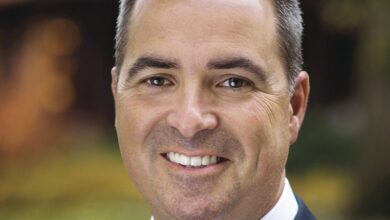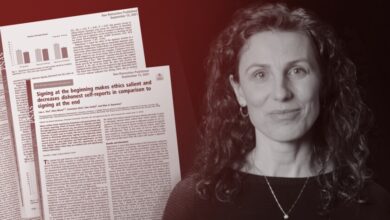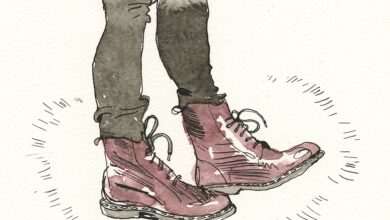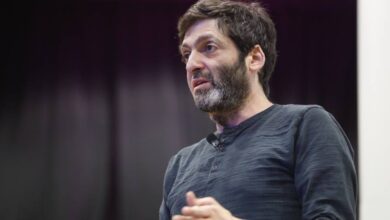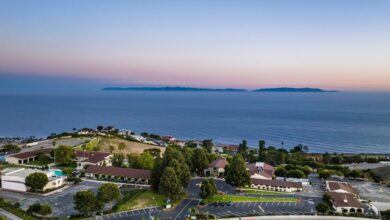Scholarly Groups Open Up, Slowly
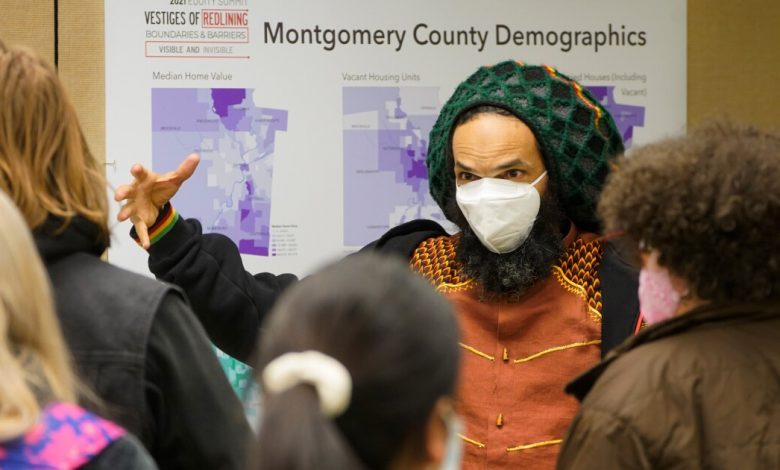
[ad_1]
When Amaha Sellassie enrolled at Sinclair Community College, he was in his mid-30s, worked in a factory, and planned to earn a certificate in supply-chain management. He was also active in his community, focused on improving the deeply segregated neighborhoods of Dayton, Ohio. But he didn’t see any career potential in that.
What he didn’t know at the time, but what proved to be life-changing, was that Sinclair’s sociology department had created opportunities for people like him. Through coursework students might find at a four-year university, faculty members showed Sellassie how he could make a career out of his activism. And he responded.
Today Sellassie is completing his doctorate in sociology at the University of Cincinnati, teaching as an assistant professor at Sinclair, and continuing his community work, most recently helping to bring a food co-operative to a low-income area of Dayton. He has no plans to leave Sinclair, and says he wants to give others the same kind of support he received. “I view success,” he says, “by how accessible I am.”
Sellassie’s trajectory was not a matter of luck. Katherine R. Rowell, a sociology professor at Sinclair and one of Sellassie’s mentors, has long been an advocate of bringing community-college students and faculty members in closer touch with the latest advances in teaching and research in their disciplines. She has been active in her disciplinary association for many years, and helped Sinclair win a federal grant to integrate data analysis into the sociology curriculum, including a course on global poverty that she taught and Sellassie took. Sinclair was the only community college that year to receive the grant.

Gus Chan for The Chronicle
Community colleges educate about 40 percent of undergraduates in the United States. Among all students who completed a degree at a four-year institution in 2015-16, about half had enrolled at a two-year college in the previous 10 years. Yet faculty members who teach at community colleges are largely absent from most national disciplinary associations, missing opportunities to attend annual meetings to catch up on the latest scholarship, or share insights on teaching with peers at both two- and four-year colleges. Less than 4 percent of the American Sociological Association’s nearly 10,000 members, for example, work at community colleges.
“There’s a pretty good case to be made that community-college students are the most diverse in the United States,” says Rowell, noting that that diversity includes not just race and ethnicity but also age and life experience. “By not engaging your community-college faculty and not engaging those students, you’re missing a really large group of people that could benefit from disciplinary resources and research opportunities.”
In turn, community-college instructors can offer insights into how to connect with a broader audience. In any given course, a faculty member might find an older, laid-off worker, a single mother, and a high-school student. How do you make geology or economics or math relevant and engaging to such students? What does group work, community-based research, and service learning look like in that context? Community-college faculty members have some answers.
They have not always felt welcome within their national associations, though. That situation is slowly changing. But cultural, structural, and other barriers persist in slowing participation.
The ‘Name-Tag Issue’
That lack of involvement has been fostered in part by disciplinary associations’ traditional emphasis on scholarship over teaching. Partly it is due to a negative feedback loop: If few community-college faculty members belong to their national associations, their interests won’t be reflected in the groups’ priorities — and others will see little reason to join.
Rowell also cites the “name-tag issue”: Historically, association members may have tended to treat community-college faculty members differently. Some associations, she notes, have required members to hold a doctorate — a credential less common at community colleges — if they wanted to sit on committees. While that policy has changed in some groups, there are still some lingering effects.
Yet having access to a professional network can be particularly crucial to community-college instructors. On many campuses the professor teaching physics or biology might be the only full-time member of the department, making it challenging to stay on top of the latest research or newest teaching strategies in the field, or connect with peers in the scholarly community. That can hurt students as well. If they transfer to a four-year institution without having had the same educational opportunities as their peers, they may change majors or struggle to keep up. That’s one reason Rowell believes the failure of disciplines to pay attention to community-college education is a social-justice concern.
A number of associations have been adjusting their structures and messaging to create a more welcoming environment for community-college faculty members. The groups recognize that if they want to bring more diversity into their disciplines, community colleges are a great place to start.
“If we’re not also working with two-year college faculty, we’re missing the boat. We’re not including people who bring a lot of expertise and experience to the table in terms of how we best teach our students,” says R. Heather Macdonald, a geology professor at the College of William & Mary who has been advocating for closer ties among two- and four-year colleges for more than 20 years.
The National Science Foundation has been a key driver in some of the efforts. In 2012 it brought together leaders of professional associations in STEM disciplines to share ideas on how to overcome barriers to connection, such as a lack of funding at community colleges for faculty members to do research on teaching or attend national meetings. And in January the NSF sponsored a series of workshops focused on strengthening engagement between disciplinary societies and community colleges.
Progress across disciplinary associations varies, activists say. The projects tend to fall into three categories: creating more pedagogical resources for instructors; expanding opportunities to participate in conferences, sit on committees, and publish in teaching-focused journals; and collecting better data on community-college students and faculty members to understand their needs and interests.
Most community-college instructors are adjuncts, which makes it particularly challenging to find professional-development opportunities that work for them, notes Robert C. Hilborn, associate executive officer of the American Association of Physics Teachers. Yet nearly half of all students who earn bachelor’s degrees in engineering and science take some courses at a community college, making it critical that instructors have access to the latest teaching strategies.
His association hopes to fix that problem through a $3-million proposal to the NSF to create a new organization focused on supporting physics teaching at two-year colleges. The project would provide professional development and other support to as many as 500 physics instructors at community colleges. The group, says Hilborn, would help reduce isolation, improve networking, and compile more information on students who take physics courses and the two-year colleges and faculty members who teach them. Organizers also want to enhance diversity, equity, and inclusion efforts in the classroom, to improve retention among faculty members and students in underrepresented groups.
A Long Labor
Fostering change can feel like an uphill battle. Geoscience societies, Macdonald notes, have been building connections with community colleges for more than two decades, including the creation of a division for faculty members at two-year colleges within the National Association of Geoscience Teachers. Geoscience professors have developed innovative research opportunities for community-college students, smoothed their path to four-year colleges, and helped students at two-year institutions plan their careers.
Yet while geosciences has diversified among undergraduates, there has been virtually no progress at the Ph.D. level over the past 40 years, with only 6 percent of doctorates going to people in underrepresented-minority groups in 2016.
Some disciplines, such as math and English, have created independent associations for faculty members at two-year colleges, recognizing their unique needs and challenges. But most associations have instead tried to carve out space for community-college instructors, with mixed success. Advocates say that, in addition to community colleges’ reliance on adjuncts and limited institutional support for professional development, much of the progress to date has been led by individuals within associations. So when they leave, movement can stall.
James Peyton, an economics professor at Highline College, in Washington, notes that one longtime advocate was responsible for creating a seat for a community-college representative — out of 11 total — on the American Economic Association’s Committee on Economic Education, a position Peyton now holds. While it is a step forward, he says, discussions of teaching economics still largely revolve around four-year institutions, where students are more likely to be of traditional age and to attend full time. And teaching, in general, still gets much less attention than research in the association.
“The discipline as a whole has a blind spot when it comes to what’s happening at community colleges,” Peyton says. “And community-college faculty are more likely to be people who don’t have economics degrees. They might be teaching with an M.B.A., but it’s a different perspective on the content.”

Gus Chan for The Chronicle
While Peyton sees the lack of representation of community-college faculty members as a cultural and historical problem, rather than intentional neglect by the AEA, that blind spot has consequences. In an article in an issue of New Directions for Community Colleges that focused on disciplinary associations, Peyton and his co-author noted that a session on diversity and inclusion in the economics classroom at the AEA’s 2020 annual meeting had no representation from community colleges.
Instructors can be nimble and adapt to students’ interests and experience, Peyton says, but he worries that some students may be getting an outdated perspective on what’s happening in the discipline. They could be missing out on other advances as well, such as the shift away from lectures to group-based work, and the addition of coursework in economic literacy, not just technical economics.
Making inroads will be a challenge because the association has struggled to establish lines of communication with faculty members at two-year colleges. KimMarie McGoldrick, an economics professor at the University of Richmond and chair of the association’s economic-education committee, said the response rate to two AEA surveys sent to community-college faculty members, asking about their needs and how the association could best help, was negligible. She chalks that up, in part, to the group’s historical lack of connection to two-year-college instructors, who in turn don’t understand what the association could offer them. “Nobody has ever asked them what they need,” she says. The AEA plans another round of outreach, with more attention to creating regional groups for faculty members. “If we have regional groups, we have community,” she says.
Advocates note that many community-college professors have found a more welcoming environment in regional or other professional associations. But if national organizations want to fully reflect who is teaching their discipline, they will need to invest more time and resources on instructors at two-year colleges.
Mark Maier, a professor and chair of the economics department at Glendale Community College, in California, says there is cause for optimism. The NSF-sponsored January workshop drew nearly 100 people, many from disciplinary societies, which indicates to him that people are recognizing the urgency of the situation.
Participants shared ideas on how to create more spaces for community-college faculty members on committees and editorial boards, and highlighted some of the innovative research on teaching being done at those institutions. They also wrestled with ways to better connect with adjuncts — “the elephant in the room,” as Maier describes the challenge.
Sellassie, the Sinclair assistant professor, says he has felt more of a sense of belonging in the Association of Black Sociologists than in the American Sociological Association. But he hopes that will change. One of his goals as a community-based researcher is to bring more people like him into academe. “I want to help be the bridge to get people into the pipeline,” he says, “and expand their idea of what’s possible.”
[ad_2]
Source link


